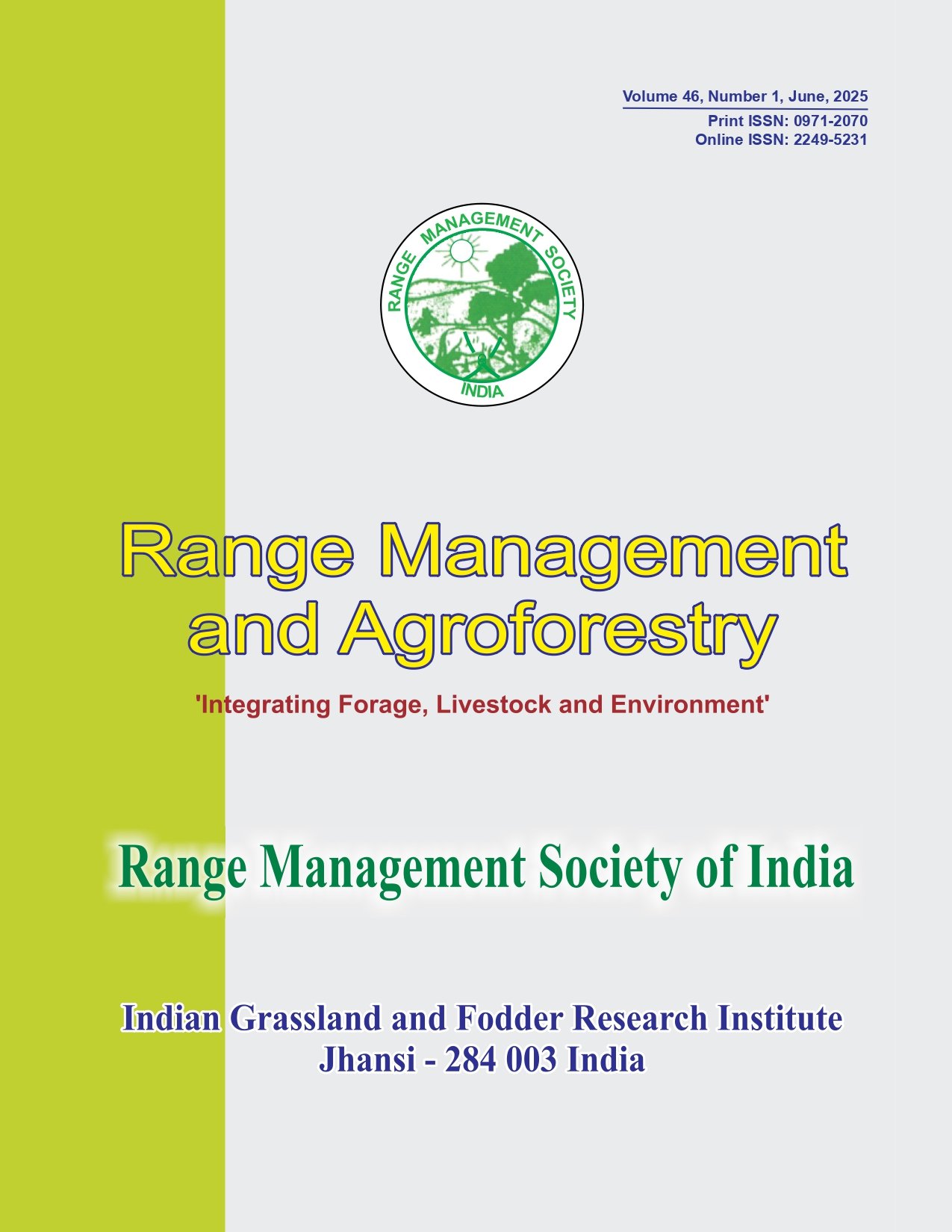Effect of participatory dissemination of fodder innovations in mango orchards of livestock farmers on fodder availability
Keywords:
Fodder crops, Fodder deficiency, Livestock health, Mango orchardAbstract
Non-competitive land use was followed by introducing perennial fodder crops in inter-row spaces of mango orchards of 50 growers between 2013-14 to 2016-17. Dharwad and Belgaum districts of north Karnataka were selected based on maximum area under mango. As a part of the study, 179 mango growers were trained in cultivation aspect of fodder crops and were advised to select fodder crops based on their resource base. However, 50 mango growers who came forward to cultivate constituted sample for the study. These growers were assisted by giving seeds and planting materials for cultivation in their mango orchard. Data from these 50 mango growers were collected by using standardised interview schedule and analysed. Shortage of green fodder (33.18±3.18%) and dry fodder (37.02±2.92%) was experienced by mango growers before participating in the project. Bajra napier hybrid, guinea, perennial fodder sorghum were the grasses selected and grown either as sole crop or in combination. Legumes (Stylosanthes hamata, fodder cowpea, Clitoria ternatea and lucerne) in combination with grasses were cultivated by less number of farmers. Benefits of fodder crops interventions in mango orchards as observed by farmers decreasing feed cost (46.94%), increase in milk yield (0.93 litre/ animal) and improvement in livestock health. These crops helped them to save 0.91 mandays and distance of 1.42 km in lean period to collect fodder. Area under mango orchard, mass media participation and number of mango trees exhibited positive and significant relationship at 1% level and total land holding at 5% level of significance with mango area allotted by growers for fodder cultivation. The mean fodder deficiency experienced was 50.6 % before and it was decreased to 9% after the interventions of fodder crops in mango orchard indicating the improvement in fodder availability among participating farmers.




